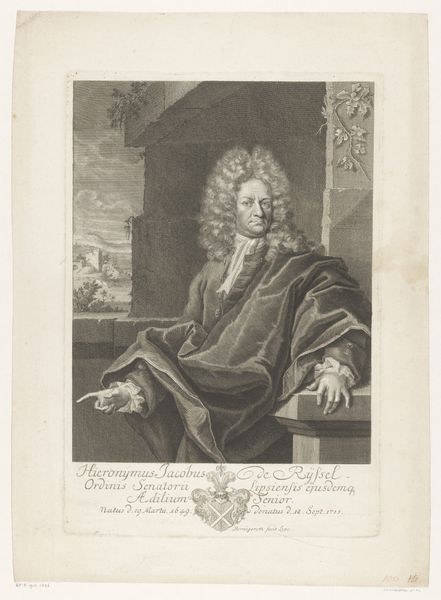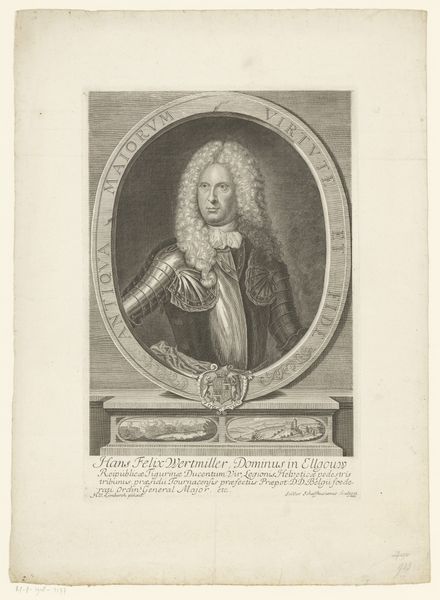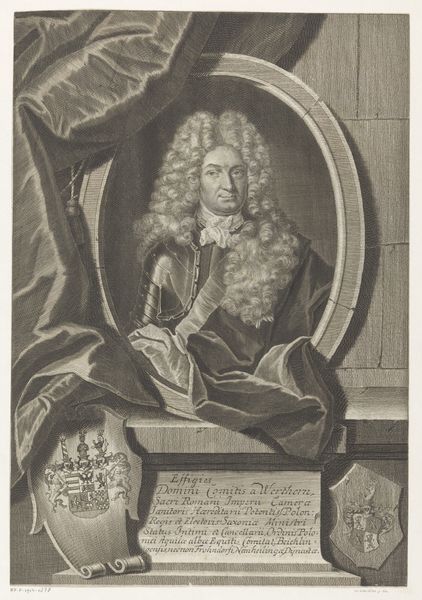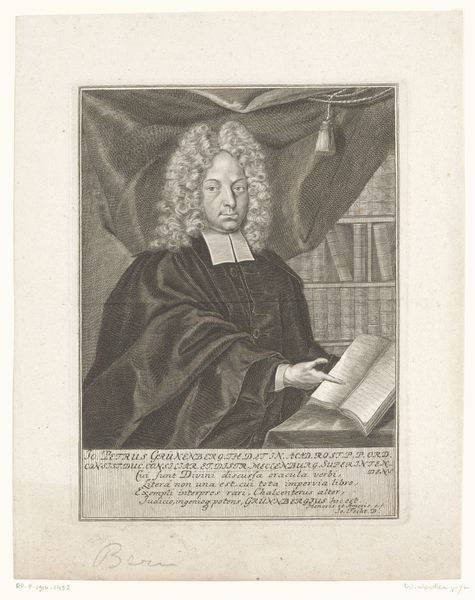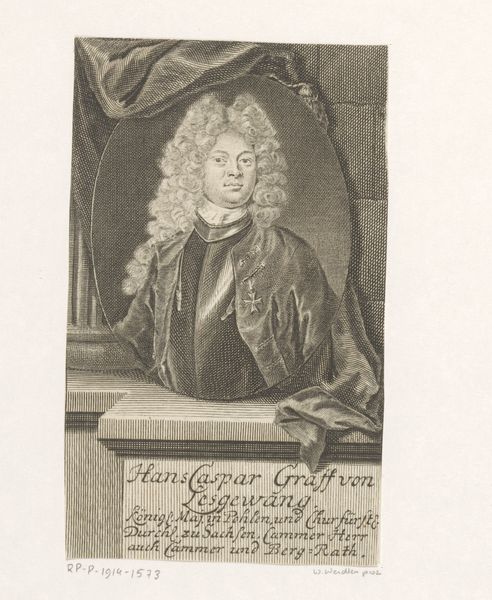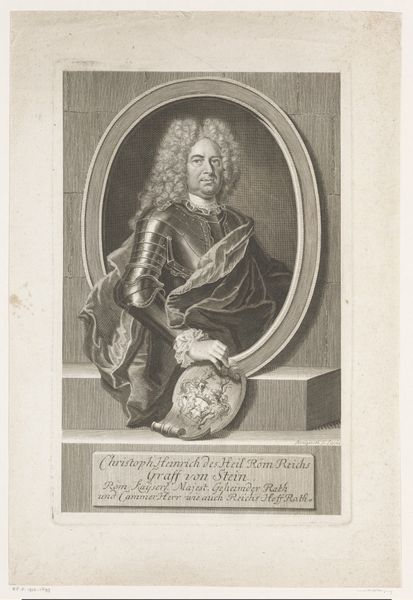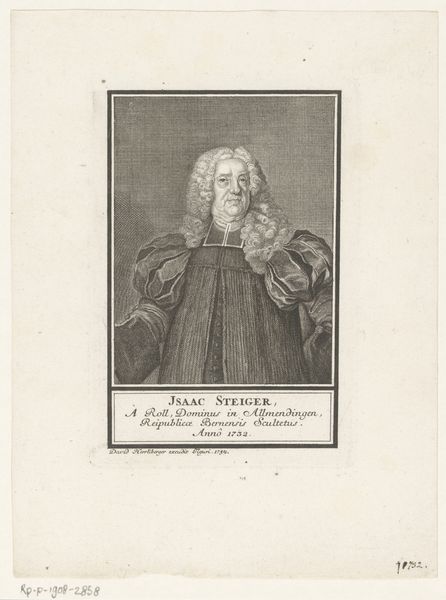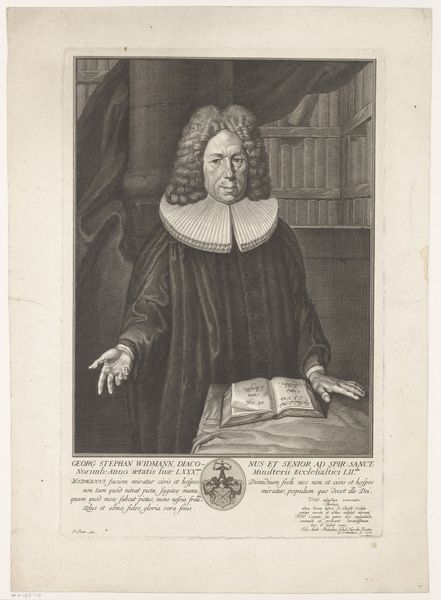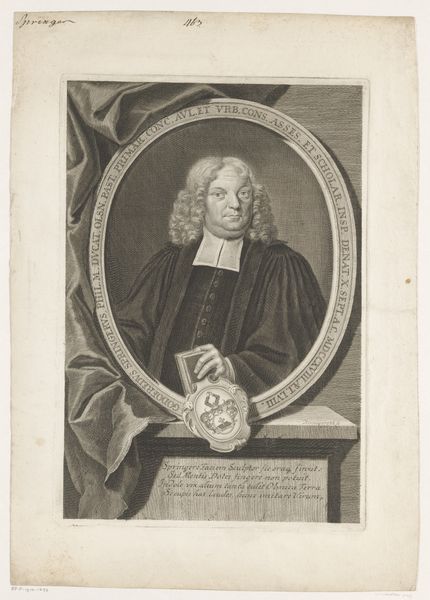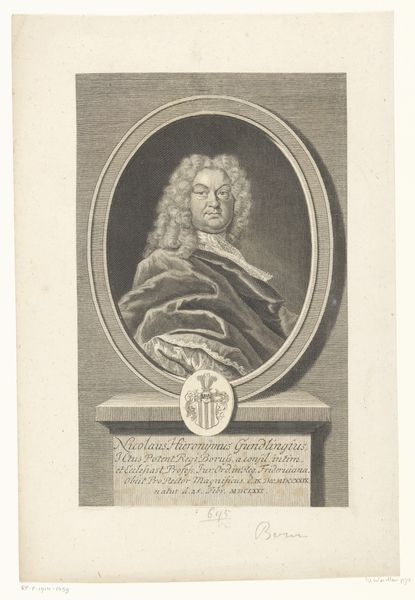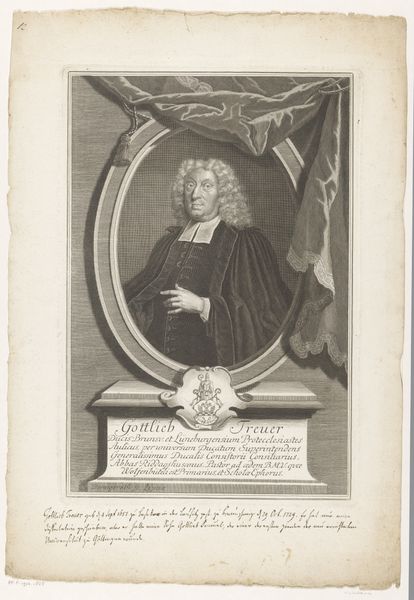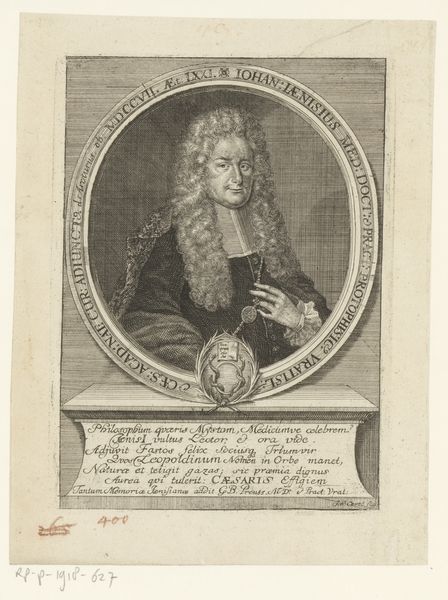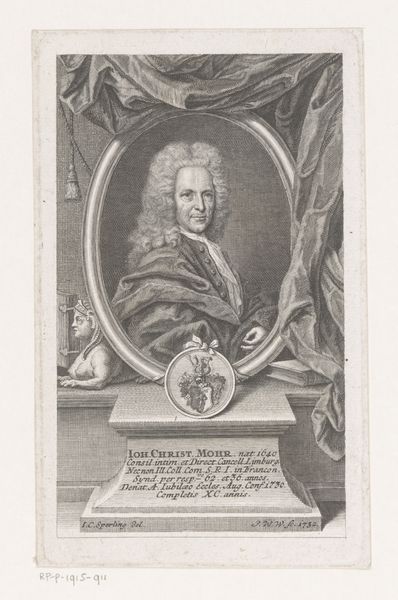
engraving
#
portrait
#
baroque
#
old engraving style
#
history-painting
#
engraving
Dimensions: height 312 mm, width 200 mm
Copyright: Rijks Museum: Open Domain
Curator: Looking at this engraving, “Portret van David Rupert Erythropel,” dating back to 1733, the immediate feeling I get is… seriousness. A contemplative sobriety, even. There’s a stillness to the piece despite all the Baroque ornamentation. What are your initial thoughts? Editor: I find it fascinating how portraiture during this period served as a declaration of status. The sitter, Erythropel, a theologian, is presented almost regally. You’ve got the draped fabric, a stack of books hinting at his intellectual weight, and that elaborate coat of arms right below him. These are all deliberate choices to communicate power and prestige. Curator: The engraver, Christian Fritzsch, definitely leaned into the visual language of power. But there's also something intimate in the details. The delicate lines of his face, the almost melancholic gaze… he seems aware of the weight he carries. Almost tired by it, perhaps? Editor: That melancholic gaze could be a commentary on the spiritual responsibilities carried by figures like Erythropel during that era. As a Superintendent, he wielded considerable religious authority, navigating a complex landscape of dogma and faith at the intersection of the political realm, an identity often reserved to the male body, both complex, important, but fraught with questions of accessibility. Curator: And Fritzsch uses the medium so cleverly—all those tiny lines creating depth and texture. There’s a kind of tactile quality even though it's just ink on paper. It is indeed impressive what one can do with ink. What appears at first is a fairly standard portrait but a lot of small little intricate details turn it into something special. Editor: Absolutely. Engravings like this also democratized representation to some extent. While oil paintings were typically for the elite, engravings made images more accessible, allowing for wider dissemination of ideas and, importantly, these carefully constructed personas, as well. These historical figures and their work became somewhat less esoteric through their easy production process in prints and drawings. Curator: I see it as more than just a record, though. Fritzsch has captured a specific moment in time and somehow hints at the man beneath all the finery. I find this deeply touching. Editor: I agree. It’s in that tension between the outward display of power and that quieter, perhaps more vulnerable inner life, that the engraving resonates even now. This image stands at the nexus of societal roles, spiritual power, personal introspection, and their lasting echo, both within and beyond the printed page.
Comments
No comments
Be the first to comment and join the conversation on the ultimate creative platform.
